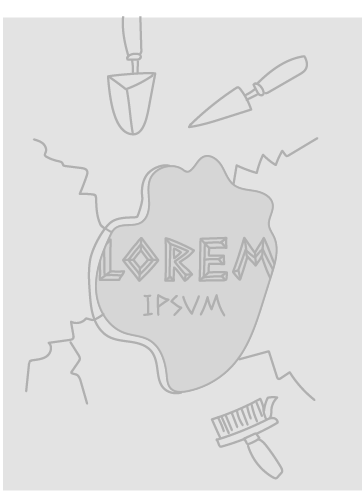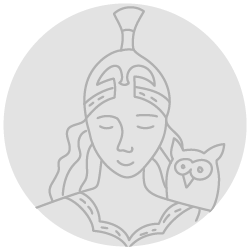Title of the work
Country of the First Edition
Country/countries of popularity
Original Language
First Edition Date
First Edition Details
Katie Daynes, Lift-the-Flap Questions and Answers about Art, Lift-the-Flap Questions and Answers. London: Usborne, 2018, 13 pp.
ISBN
Genre
Illustrated works
Instructional and educational works
Toy and movable books
Target Audience
Children (c. 4–10)
Cover

We are still trying to obtain permission for posting the original cover.
Author of the Entry:
Sonya Nevin, University of Roehampton, sonya.nevin@roehampton.ac.uk
Peer-reviewer of the Entry:
Susan Deacy, University of Roehampton, s.deacy@roehampton.ac.uk
Elizabeth Hale, University of New England, ehale@une.edu.au

Katie Daynes (Author)
Katie Daynes studied modern languages at the University of Cambridge before becoming a non-fiction copy-writer. She went on to specialise in young children's fiction and non-fiction, writing mostly for Usborne Publishing. Her prolific output includes re-tellings of traditional tales such as The Ant and the Grasshopper (Usborne, 2008) and The Enormous Turnip (Usborne, 2014), non-fiction titles such The Story of Diwali (Usborne, 2008) and titles in Usborne's Famous Lives series: Cleopatra (2004), Winston Churchill (2006). She wrote titles for Usborne's See Inside series, including See Inside Castles (2005), See Inside Ancient Rome (2006), See Inside Your Body (2006). She is the author of Usborne's Lift the Flap Question and Answers series, which includes the following titles in the Lift-the-Flap series: Questions and Answers about Long Ago, Animals, Our World, Science, Space, Body, Dinosaurs, Food, and Time.
Bio prepared by Sonya Nevin, University of Roehampton, sonya.nevin@roehampton.ac.uk

Marie-Eve Tremblay
, b. 1978
(Illustrator)
Marie-Eve Tremblay is an illustrator who creates illustrations for children's and adult's books. She has created illustrations for several of the titles in Usborne's Lift-the-Flap series. She is the author/illustrator of It's Raining Cats and Dogs!: Sing-Along Animal Songs (The Secret Mountain, 2016). Tremblay is based in Montreal, Canada.
Source:
Profile at colagene.com (accessed: March 13, 2019)
Bio prepared by Sonya Nevin, University of Roehampton, sonya.nevin@roehampton.ac.uk
Summary
This beautifully-illustrated book immerses young people in the world of art. It belongs to an extensive series which introduces children to a variety of subjects. Young people are introduced to art via a question and answer format focused on the sorts of questions that people might have about art and the sorts of questions that can be asked to explore art beyond the surface – in that sense the book is about helping young people to engage with art rather than simply presenting them with art to look at. The section divisions are: What? Yes or No? Why? Where and When? How? Who? and Which? Indirectly, this introduction to art is also an introduction to aspects of classical culture and to the influence that antiquity has exerted across time.
The book's cover depicts four children in an imaginary gallery surrounded by art of diverse styles. Classical influence is most explicitly indicated by a cartoon version of Michelangelo's David, which is in the foreground of the cover, the largest artwork depicted. The illustrator has avoided depicting male genitalia by placing an information board in front of the statue's crotch. The works of art depicted via illustrations, some of which are very close to the originals while others have been done in a slightly more cartoon-like version. The humans depicted interacting with the art (creating it, viewing it, selling it etc) are drawn in a child-friendly cartoon style.
In What? (p. 1, What is art? What is a primary colour? What's the point of art? etc), classical art is represented via the bust of a woman, indicative of the sculpted head of a Roman woman. This sits on the table beside a seated woman surrounded by artworks. Yes or No? (pp. 2–3, Can I be an artist? Did ancient Greeks really look like this? Can you arrange these works of art from oldest to newest? Is graffiti art? etc) explores a variety of art forms and ideas about art. "Did ancient Greeks really look like this?" accompanies a representation of the Discus Thrower statue and addresses realism and idealisation. Beside the statue is a depiction of an ancient Greek vase on a museum stand; the style and colouring is apt for a classical pot, but Greek-style acanthus flowers decorate where a figurative scene would be more typical. Under the flap it is explained that ancient Greeks did not really look like the statue, but that ancient Greeks "wanted their art to show young athletic bodies rather than everyday, real people." The inner flap text is accompanied by a more realistic depiction of a Greek vase with a scene of athletes running; further text notes that athletes really did exercise in the nude, a pointer which helps young readers to understand the balance of realism with regard to clothing. A marble head of a male youth features on a plinth in the centre of the two-page spread. The oldest to newest question features a cave painting, an ancient Egyptian depiction of gods, a medieval stain-glass window, and a modern painting.
Why? (pp. 4–5, Why do paintings have frames? Why draw something when you can take a photograph? Why do I have to be quiet in an art gallery?) depicts a scene from an ancient Egyptian tomb, accompanying the question "Why are these heads facing sideways?" . An image of 70,000 year old South African rock art stresses the great antiquity of the practice of making art. Classical antiquity is present through a depiction of Botticelli's Birth of Venus, accompanying the question "Why are there so many paintings of naked people?" The flap reveals a life drawing class while the text informs the reader that "Ancient gods, goddesses and heroes were painted naked to show how perfect their bodies were", and further information about life drawing done for training purposes "nowadays."
Where and When? (pp. 6–7, Where can I see these works of art? Where do artists work?) asks when the Lion-Man, the Great Sphinx, and Statue of Liberty were made. The Lion-Man at 30, 000 years old, represents very ancient art; the other two are examples of public, open air art and as such they are represented in situ rather than on plinths. The flap reveals the age of the Sphinx and a depiction from above enables the reader to compare the size of the Sphinx with a football pitch. The Statue of Liberty's flap does not allude directly to its classical influence but rather to the stages of its presentation and its size. How? (pp. 8–9) contains less explicit classical material, yet the classical influence remains clear. "How do you make a sculpture out of... Bronze? Clay? Stone?" features Edvard Eriksen's classically-influenced Little Mermaid, an account of working with clay that includes classical style heads and vases going into a kiln, and Michelangelo's Moses as an example of working stone. A large section of the Sistine Chapel extends the presence of renaissance classicising art.
Who? asks questions about artists, artist's subjects, and art consumers (pp. 10–11, Who were the Impressionists? Who are these portraits of? Who hung tapestries on their walls). The portraits include the Mona Lisa, Vermeer's Girl with the Pearl Earring, and the Bust of Nefertiti. Which? begins to prompt readers to apply some of what they have learned on preceding pages. Rodin's The Thinker is an example of figurative sculpture in the classical tradition, while a Chinese Ming vase is a reminder that pottery has been produced by many cultures, not only classical. Michaelangelo's neoclassical Moses is one of seven objects which the reader is invited in Things to Spot to find by rereading the book.
Analysis
One of the most delightful things about this volume from a delightful series is that it takes seriously young people's potential interest in art and art history. This in turn encourages young children to perceive themselves as people who may enjoy and explore art and as people who are welcome visitors to galleries and museums. That this is remarkable is clearer when it is appreciated that Art and Long Ago are the only two Humanities/non-STEM subjects included in the series, which predominantly introduces subjects such as Our World, Science, Space, Body, Dinosaurs, Food, and Time. The lift-the-flap format is extremely child-friendly and playful. As these books may well be a child's first – or at least early – introduction to the subject of each book, this interactive and playful approach increases the likelihood that the child reader will consider these accessible and enjoyable subjects – an important early lesson.
Classical and neo-classical culture plays a prominent role in this introduction to art, which thereby introduces young people to classical culture and to its significant impact on the art an imagination of subsequent eras. The presence of Michelangelo's David as the largest image on the front cover is typical of the privileged position that classical and neoclassical art has in the volume. The reader will then find something classical or neoclassical in every section of the book, be it sculpture, ceramic, or painting. The ancient Greeks are the only people whose culture is specifically named in the upper surface of the book (above flaps). Some individuals are referred to by name, but only ancient Greeks as a group. This draws the attention of the reader to their historical significance in artistic tradition, implicated in the production of sculpture and ceramics. That said, classical (rather than neoclassical) art accounts for four images, while ancient Egyptian also accounts for four images, making Egypt an almost equally prominent ancient culture (being named only in an under-flap). There are c.12 combined classical and neoclassical. Ancient Romans do not feature and as such are not presented as an ancient culture that "does" art.
The Greeks are referred to in the question, "Did ancient Greeks really look like this?", above a picture of the Discus Thrower statue. This prompts young people's awareness of the potential difference between image and reality, realism and idealisation, valuable themes in the understanding of art and art history. Young people are also guided to understand that the nude element of classical art can refer to reality rather than idealisation, with the clarifying comment that while ancient Greeks preferred to have idealised bodies in their art (unrealistic) they did practice many sports naked (realistic). The issue of nudity is revisited in the following section, this time with the explicit question "Why are there so many paintings of naked people?". This time the answer eschews idealisation of human bodies in favour of an answer about the desire to show "how perfect" ancient gods', goddesses' and heroes' bodies were, and a follow-up answer about life-drawing in the modern world.
It is noticeable that ancient religion is not mentioned amongst the answers to the question "What's the point of art?", although it played a very large part in the motivation for art for much of history. While this is an omission, it is perhaps explained by the primary purpose of the book, namely to enthuse young people about art, which prompts answers which address what young people themselves might get out of art rather than historical explanations.
Addenda
Art Consultant:
Rosie Dickins and Ruth King


